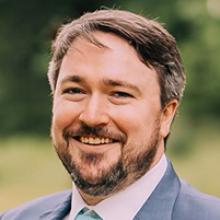Impact of Primary Care Health Professional Shortage Area Designation on Provider Supply

Health equity has increasingly become a focus of policy initiatives. Improving primary care access and quality is essential to promoting health equity because primary care is a patient’s entry point to the greater health care system as well as a key component of preventive care. But there is a shortage of primary care physicians working full time which is predicted to grow. These shortages are unevenly distributed across the U.S., resulting in wide disparities in the availability of primary care, leaving many rural counties significantly underserved.
To alleviate the shortage of primary care providers, the Health Resources and Services Administration (HRSA) and state primary care offices work together to designate counties as primary care Health Professional Shortage Areas (pcHPSAs) and to offer and provides monetary incentives for providers, especially physicians, to serve the pcHPSA county populations. More than a quarter of the U.S. population lives in full or partially designated pcHPSAs. These counties also tend to exhibit other social determinants of health associated with reduced access to care, such as poverty, living in rural areas, unemployment, or a high proportion of residents of color.
Since the U.S. forecasts an even greater shortage of primary care providers in the coming years, it is important from a policy perspective to consider whether the current pcHPSA designation program is effective in (a) attracting primary care providers to practice in shortage areas; (b) increasing use of primary care services by insured individuals, and (c) plausibly improving health outcomes for residents in shortage areas.
Does the pcHPSA Designation Impact Provider Supply?
In this study, we examined how full pcHPSA designation impacted the supply of health care providers to the area, and assessed if the financial and immigration visa incentives are effective in attracting primary care providers to practice in designated counties.
- We have found that a full pcHPSA designation is associated with an increase in the patient-to-primary care physician ratios in rural counties (compared with rural non-pcHPSA counties), starting three years after they were designated as such.
- We did not observe a similar increase in patient-to-primary care physician ratios in nonrural full pcHPSA counties (compared with nonrural, non-pcHPSA counties) or when comparing all full pcHPSA counties with all non-pcHPSA counties, suggesting that the incentives provided by the pcHPSA designation are not equally effective for all counties.
- It is unclear if financial and visa incentives are ineffective in nonrural pcHPSAs or if the lack of impact seen in nonrural pcHPSAs could be due to an insufficiently similar comparison group or a lack of statistical power.

